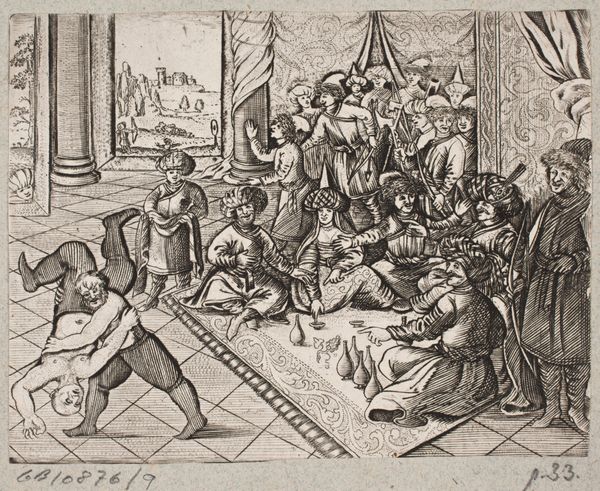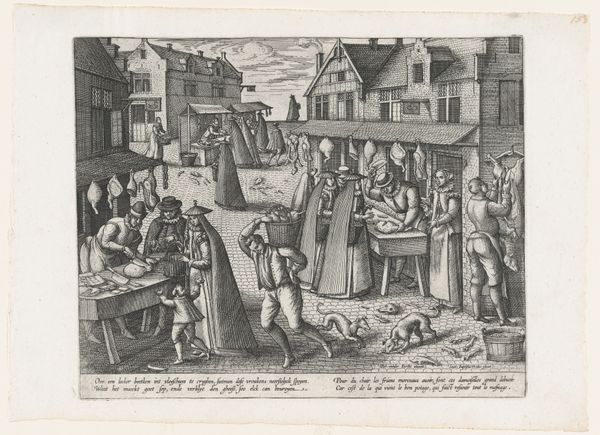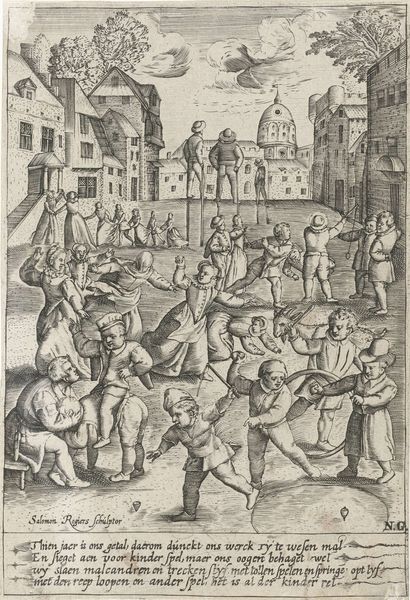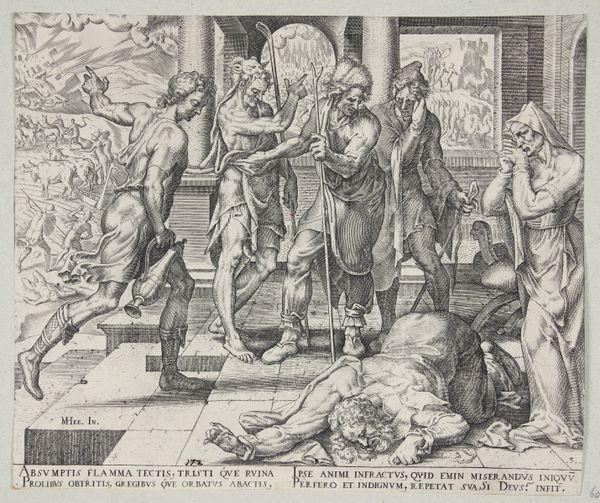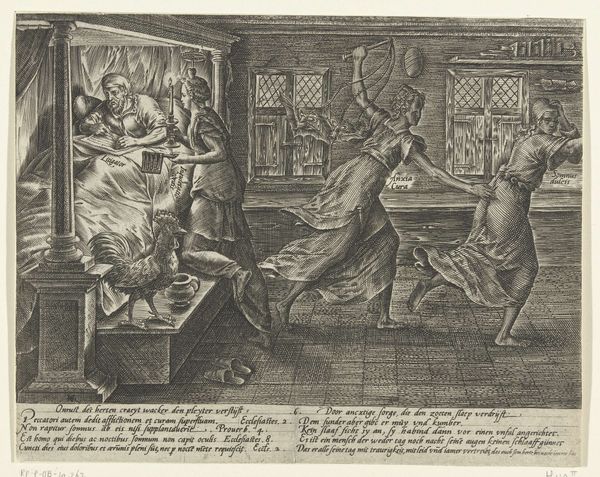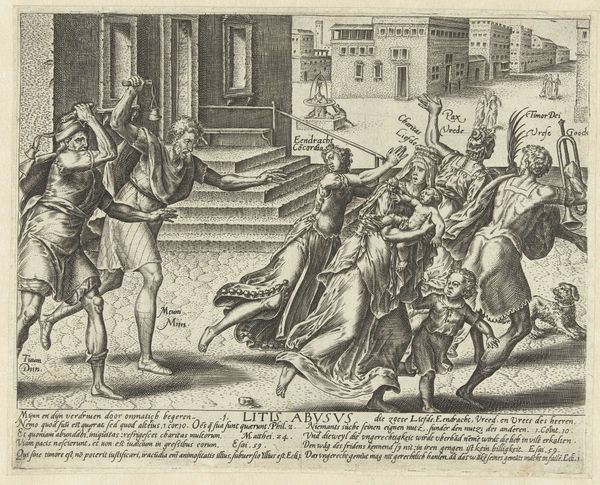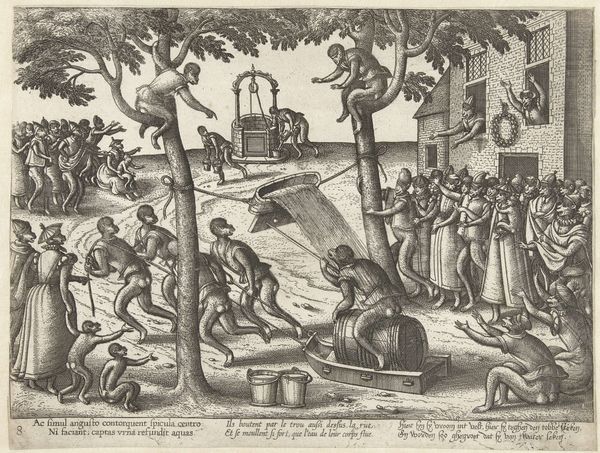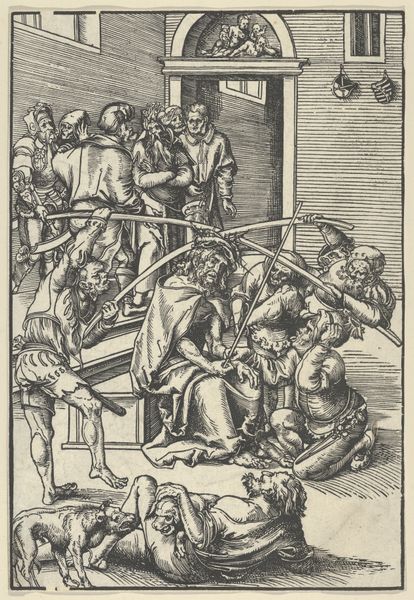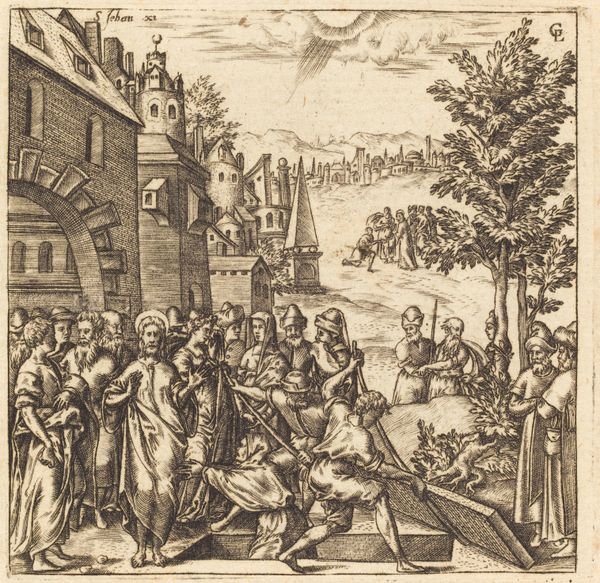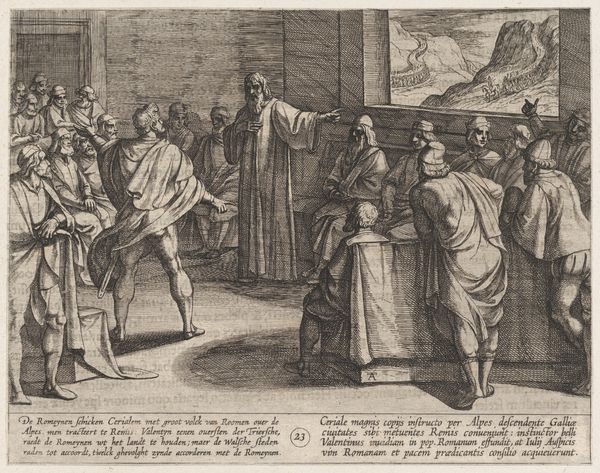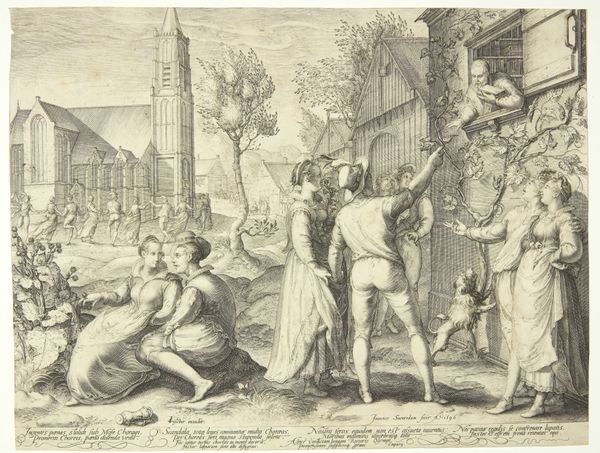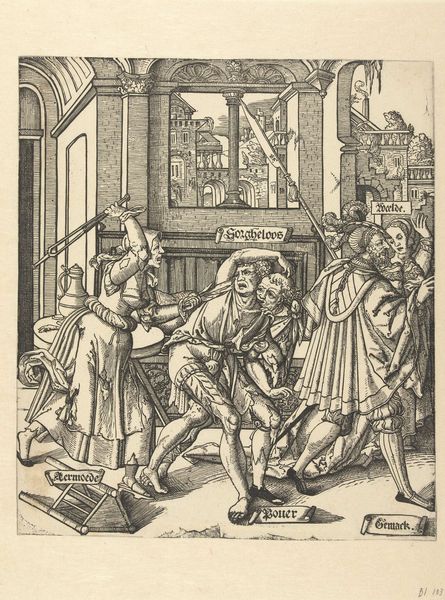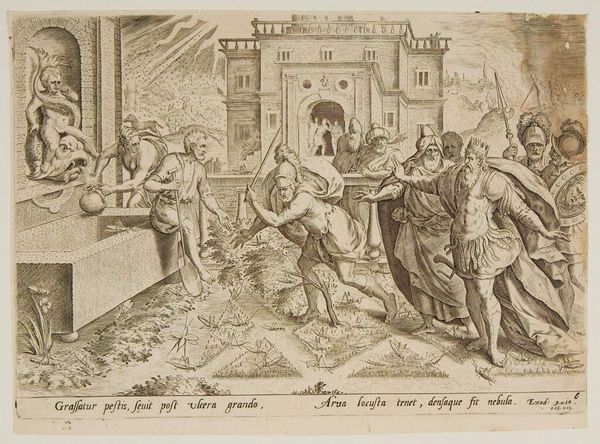
drawing, print, engraving
#
drawing
#
narrative-art
#
baroque
# print
#
history-painting
#
engraving
Dimensions: sheet: 7 1/16 x 9 in. (18 x 22.8 cm)
Copyright: Public Domain
Curator: Hendrick Goltzius’ engraving, "The Abuses of the Law, Plate 7," made sometime between 1570 and 1617, certainly depicts a scene of injustice. The stark, almost brutal, nature of the scene is quite striking. Editor: It is! What really gets to me is the chaotic energy—all these figures converging on a central figure. How do you interpret this work, particularly given the time it was created? Curator: This work operates within a very specific socio-political framework. Look closely—Goltzius uses the visual language of the Baroque to critique the very structures of power within his society. We see figures representing “Good Cause” being attacked while injustice, embodied by "Victory" who is indifferent to violence, reigns. Editor: I notice that the figures are labeled with text. Does that serve to underscore the artist’s message? Curator: Absolutely! The text acts as a commentary, revealing the artist’s activist intentions. The labels reveal who perpetrates evil and those complicit via unjust judgements. Goltzius is engaging in a form of visual protest, condemning the corrupt legal practices he witnessed. Editor: So it's a condemnation of social inequality and political corruption through art. Is that a common theme at the time? Curator: While other artists might have alluded to such themes through allegory, Goltzius is much more direct. Think about the religious and political upheavals of the late 16th and early 17th centuries. His work speaks to the anxieties and power imbalances of his time, creating a strong intersectional message, particularly with ideas surrounding class and privilege. How does the historical context affect your understanding of the work? Editor: I think I was only considering a basic "good vs bad" narrative at first. But by looking into the context, considering issues around power, social structures, it feels way more complex and relevant, actually. Thank you! Curator: Precisely! Art becomes a lens through which we can examine history and critique our own present realities. It is always relevant.
Comments
No comments
Be the first to comment and join the conversation on the ultimate creative platform.
